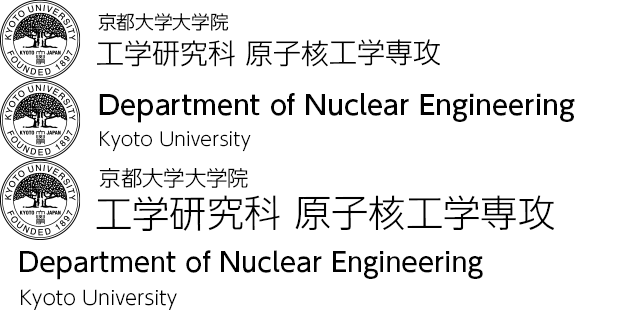Condensed-matter Chemistry in Actinides
Heavy elements that have f-electron orbitals, which are called lanthanide and actinide, show particular chemical characteristics under various conditions.
The objective of our research is to study the chemical characteristics of f-elements under the condition of aqueous solution and liquid metal. For these studies, analytical methods using electrochemistry, spectrophotometry, diffractometry, mass-analysis, and radiochemical analysis are adopted. One of the technological objectives of our study is the applications to nuclear medicine and radioactive waste management.
Academic Staff
Tomoo YAMAMURA
Professor (Institute for Integrated Radiation and Nuclear Science)
Research Theme
Contact Information
TEL: +81-72-451-2442
FAX: +81-72-451-2442
E-mail: yamamura@* (Add "rri.kyoto-u.ac.jp" after @)
Research Topics
Application of Actinide Complexes to Nuclear Medicine
Uranium, which is used as fuel in nuclear power plants, is in the "actinide" series in the periodic table, along with plutonium, which is the fuel produced when it is burned, and neptunium, americium, and curium, which are considered radioactive waste. Some of you may recall that the rare earths and actinides series are listed farther down the periodic table. The elements after plutonium have been discovered by mankind less than 80 years ago, so they have a variety of interesting properties that are still being studied.
There are 15 elements in the actinide family, all of which are radioactive. On the other hand, they have unusual electronic properties, not unlike rare earths, which are used in magnets and lasers. We would like to make use of these actinides by creating and studying interesting materials.
Specifically, we will synthesize various complexes containing actinides (fig 1, fig 2) and study their properties. Such studies can be directed toward nuclear medicine, for example, by using the decay series of actinides. The most promising actinide nuclide is Ac-225, which Yamamura produced and supplied during his time at Tohoku University. An example of this success was in 2016, when a patient with terminal metastatic cancer was completely cured in a German hospital by the administration of Ac-225 nuclear medicine.

Figure 1: U(acac)4 complex Figure 2: Trivalent solution
Oxide Production for Radioactive Waste Management
We can create and react with various oxidation states of uranium. We can react under high temperature and high pressure conditions, but conversely, we are interested in how mild the conditions can be to make the reaction proceed. One method we have developed is to synthesize UO2 under very mild conditions (below the boiling point of water) while controlling the particle size, etc..
As mentioned above, the elements that are considered to be radioactive waste (called minor actinides, MAs, etc.) need to be managed for 100,000 years if they are included in the spent fuel as they are, and for 10,000 years if they are managed compactly as high-level radioactive waste through reprocessing. Therefore, research is being conducted all over the world to see if it is possible to shorten the lifetime of the fuel through nuclear transmutation and other methods, but it will take time to solve the technical problems. Therefore, we are applying the method described to the treatment of minor actinides, and are working on research and development of a method to store them until the transmutation method is solved.
